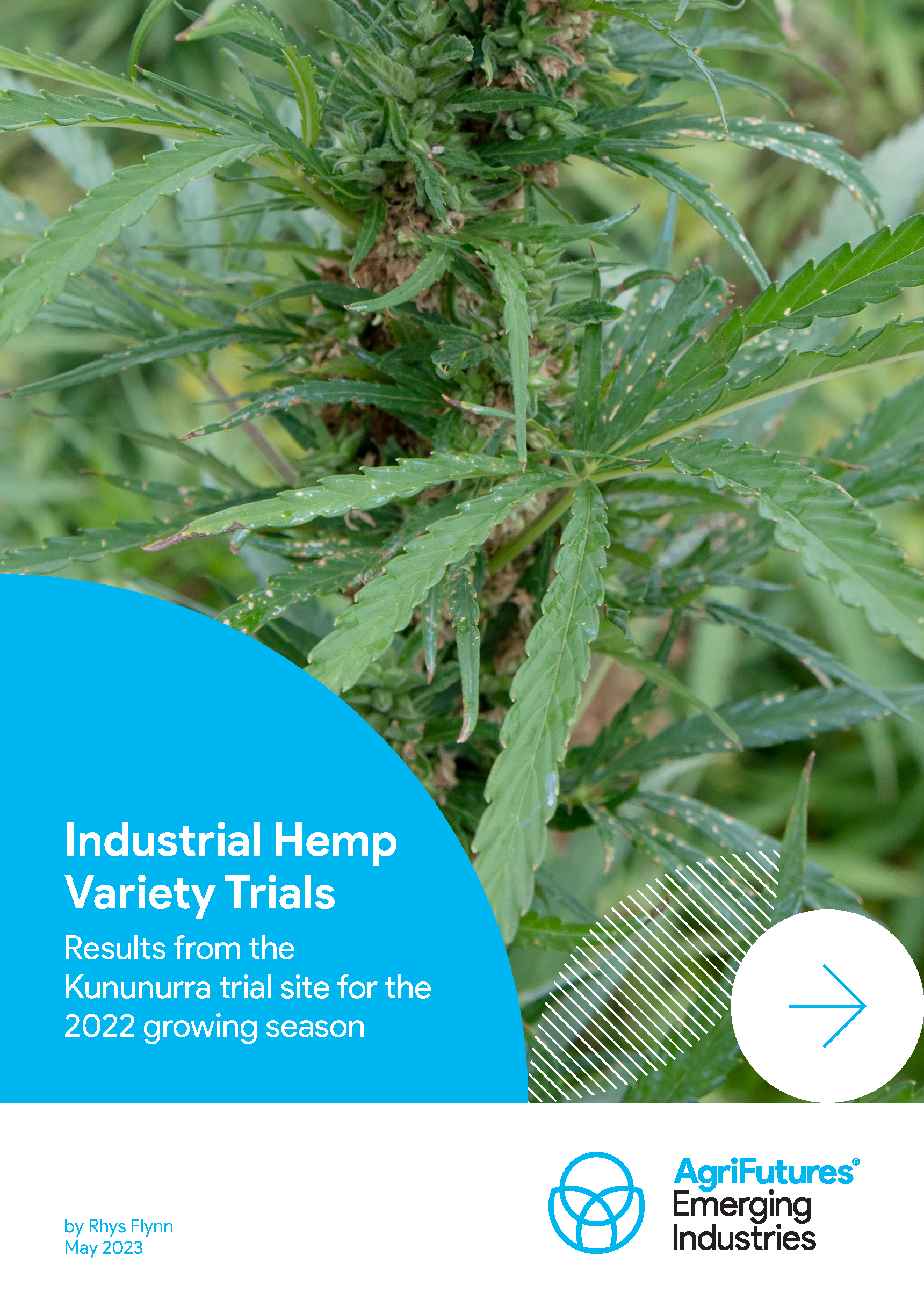AgriFutures Australia’s Emerging Industries Program has determined that industrial hemp (Cannabis sativa L.), i.e. low tetrahydrocannabinol hemp, is an industry with high growth potential. Industrial hemp is a quick-growing and high-yielding biomass crop that has a diverse range of uses, including textiles, stockfeed, pet bedding, human food (seed) and building materials. However, to meet demand, there needs to be an increase in the scale of production – yet little is known about the appropriate varieties or timing of sowing across a broad range of farming systems in Australia.
Identified as a top priority in the Australian Industrial Hemp Strategic RD&E Plan (2022-2027) was the establishment of nationally coordinated industrial hemp variety trials that cover the current and future major production environments.
The Industrial Hemp Variety Trials (IHVT) program aims to provide Australian hemp growers with independent information about the performance of industrial hemp seed varieties suited to specific geographic locations within Australia. The IHVT is a three-year project, with year one including sites in the Northern Territory (1), South Australia (2), Tasmania (1), Victoria (1), and Western Australia (2).
Year one field trials conducted at the Frank Wise Institute of Tropical Agriculture at Kununurra in northern Western Australia compared 12 hemp varieties sown at three sowing times. Late-maturing varieties achieved better early canopy cover and weed suppression, and are potentially better suited to the hot climate, especially if weed control is a major issue on farm. Further, late-maturing varieties yielded higher than early-maturing varieties at the earliest time of sowing in late April. However, at the second (mid-May) and third (mid-June) times of sowing, late-maturing yields decreased while early-maturing yields remained consistent across both periods.
This is the first year of the IHVT program and the results represent only a single subset for the varieties grown, therefore caution is advised as different seasonal conditions may impact the relative performance of varieties. Further trials will be conducted over the coming two years to provide a robust dataset.





